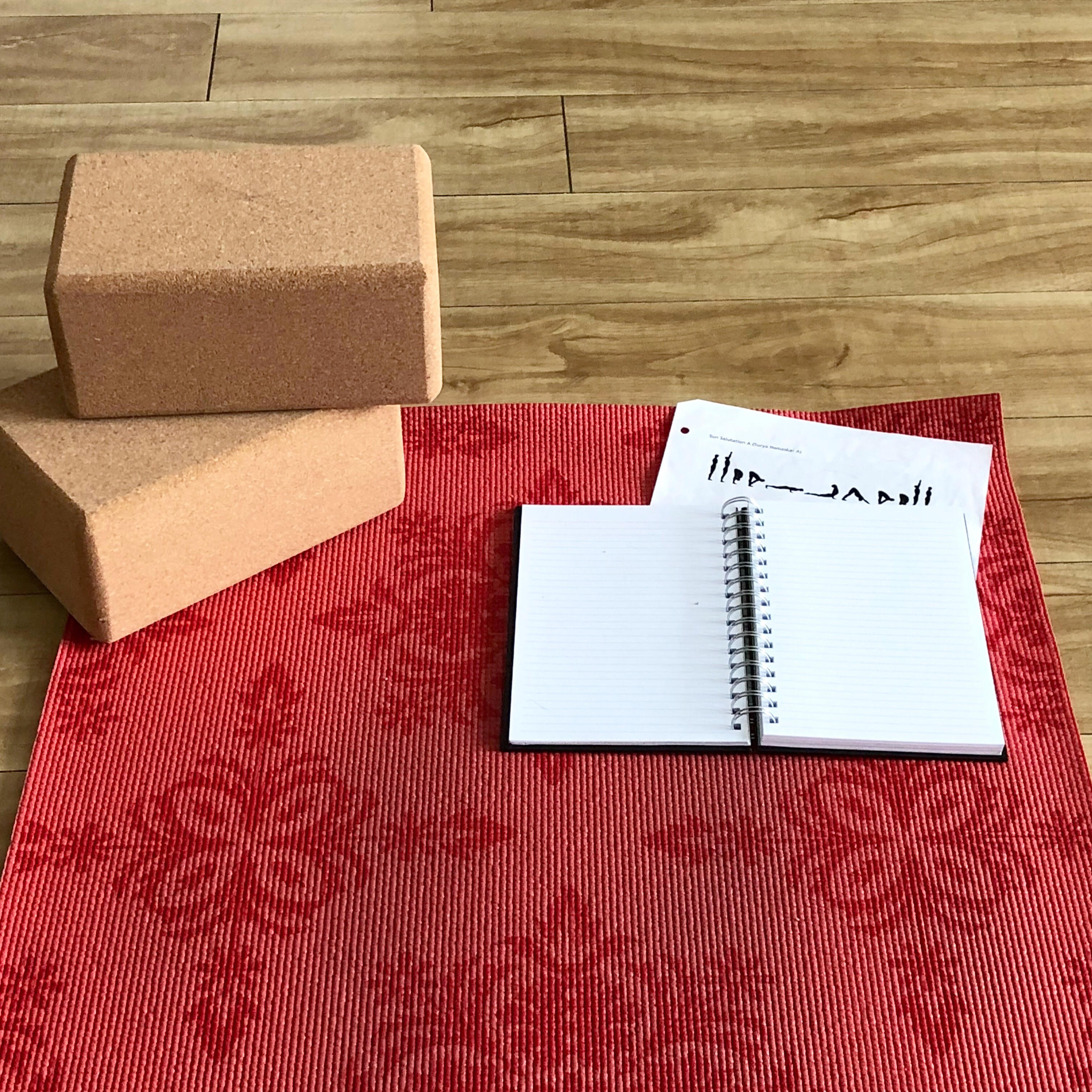It was about this time last year that I taught my first class at a studio as part of my completion of teacher training. In preparing for the class, I practiced teaching a small group of yogi friends and with my fellow trainees. But this was the first class I was teaching at the studio that was on the schedule. It was open as a free class for other studio members to take. And it was…nerve-wracking.

If you practice regularly, there may be teachers that you love taking class from for a variety of reasons. Maybe it’s the creative sequencing, the seemingly right balance of challenge and rest and restore, or how they always seem to say exactly what you need to hear, something that resonates with you that day or week. It can also seem so natural, the way their classes flow. In preparing to teach my own class, I really saw what goes into that.
I didn’t expect it to be easy, but I also didn’t want to feel like I let down those teachers whose classes I enjoy so much. I got so far into my own head before that class, but ultimately the end result was that it was such a wonderful experience for so many reasons. The biggest takeaway for me may have been that once I actually started teaching, I was so focused on teaching, on watching the students to see how they practiced and on what else I may need to offer guidance, that all of the little insecure thoughts I may have had before didn’t any room in my mind during that one hour!
The way I prepared for class was first going through the flow I’d outlined myself to roughly time it – expecting I might actually go slower as I talked it through – and to see how it felt and if the transitions made sense. And then I talked through it multiple times, timing my cues and how many breaths to hold or how many minutes I wanted to aim for with savasana. And then I timed myself with both cues and demos. This repetition also really put the general sequence of the practice in my mind. I knew that if I knew well my class outline and structure, I could get to what came next even if I was on the other side of the other side of the room from my notes.
For the class itself, there will be a lot going on. While walking the room, there’s remembering which side students are on (especially if you don’t mirror teach, which I didn’t), what comes next, but also looking to see if the cues make sense. Are the students flowing with my cues or are they all on different sides or pausing to take the next step if I was unclear? And if so, how can I be clearer? What should I say next? Were there any alignment reminders needed?
Support was huge for me for that first class. Before the class, I didn’t know what I thought would be preferable. Would I feel too much expectation if friends took from me? Was it better to teach people who never met me? But I did invite friends and once that hour came, it was so amazing to look around the room and see the smiles and support on the faces of people who knew me. And that meant so much.
Teaching that first class can seem daunting. But what helped me was the preparation and practice I put into it, reading the room to see what the class might need, and the support of friends and my fellow trainees (who are definitely in that friend category!). It also gave me a much deeper appreciation for a good class now that I truly know how much work goes into it.
This is the part of a series of posts for The Mat yoga studio, sharing my thoughts and observations as a student only. The views and opinions are my own.


